- Home
- Latest News
Which is better eMMC 5.1 or UFS 2.1?
In the realm of mobile technology, the choice of storage solutions can significantly impact the performance, efficiency, and overall user experience of devices. Two widely used storage technologies are eMMC 5.1 (embedded MultiMediaCard) and UFS 2.1 (Universal Flash Storage). Each has its own set of characteristics, advantages, and use cases. This article aims to compare eMMC 5.1 and UFS 2.1, exploring their key features and performance metrics to determine which is better suited for various applications.
Understanding eMMC 5.1
eMMC 5.1 is a popular embedded storage solution found in many mobile devices such as smartphones, tablets, and budget laptops. It integrates NAND flash memory and a flash memory controller into a single package, making it a cost-effective and straightforward option for manufacturers.
Key Characteristics of eMMC 5.1:
Architecture: eMMC 5.1 combines NAND flash memory with a controller in a single package, simplifying the integration process for device manufacturers and reducing the overall footprint on the device's PCB (Printed Circuit Board).
Performance: eMMC 5.1 offers sequential read speeds of up to 250 MB/s and sequential write speeds of up to 125 MB/s. These speeds are adequate for most everyday tasks such as web browsing, app usage, and media consumption.
Cost: One of the main advantages of eMMC 5.1 is its cost-effectiveness. It provides a good balance between performance and price, making it a popular choice for budget and mid-range devices.
Power Efficiency: eMMC 5.1 is designed to be power-efficient, which is crucial for extending the battery life of mobile devices.
Use Cases: eMMC 5.1 is commonly used in smartphones, tablets, eReaders, and low-cost laptops, where high-speed data transfer is not a primary requirement.
Understanding UFS 2.1
UFS 2.1 is a more advanced storage technology designed to address the limitations of eMMC. It offers higher performance and efficiency, making it suitable for high-end devices that require fast data access and transfer speeds.
Key Characteristics of UFS 2.1:
Architecture: UFS 2.1 features a more complex architecture with a bidirectional serial interface, allowing simultaneous read and write operations. This significantly enhances the overall performance compared to eMMC.
Performance: UFS 2.1 provides sequential read speeds of up to 800 MB/s and sequential write speeds of up to 200 MB/s. These speeds are significantly higher than those of eMMC 5.1, making UFS 2.1 ideal for performance-intensive applications.
Efficiency: UFS 2.1 is more power-efficient due to its advanced architecture and support for features like Command Queueing and High-Speed Gear. These features help improve power consumption and extend battery life.
Cost: UFS 2.1 is generally more expensive than eMMC 5.1 due to its advanced capabilities and higher performance.
Use Cases: UFS 2.1 is commonly used in high-end smartphones, tablets, digital cameras, and other devices that require rapid data access and high-speed performance.
Comparing eMMC 5.1 and UFS 2.1
When comparing eMMC 5.1 and UFS 2.1, several key differences emerge that can influence the choice of storage technology based on the specific requirements of a device.
Speed and Performance:
eMMC 5.1: Sequential read speeds up to 250 MB/s and write speeds up to 125 MB/s.
UFS 2.1: Sequential read speeds up to 800 MB/s and write speeds up to 200 MB/s.
Verdict: UFS 2.1 is significantly faster than eMMC 5.1, offering superior read and write speeds that enhance overall device performance.
Power Efficiency:
eMMC 5.1: Designed to be power-efficient but lacks advanced power-saving features.
UFS 2.1: More power-efficient due to features like Command Queueing and High-Speed Gear.
Verdict: UFS 2.1 offers better power efficiency, which can contribute to longer battery life in mobile devices.
Bidirectional Data Transfer:
eMMC 5.1: Can handle only one operation at a time (read or write).
UFS 2.1: Supports simultaneous read and write operations, enhancing overall speed and efficiency.
Verdict: UFS 2.1's bidirectional data transfer capability provides a significant performance advantage over eMMC 5.1.
Cost:
eMMC 5.1: More cost-effective, making it suitable for budget and mid-range devices.
UFS 2.1: More expensive due to its advanced features and higher performance.
Verdict: eMMC 5.1 is more budget-friendly, whereas UFS 2.1 justifies its higher cost with superior performance.
Market Trends:
eMMC 5.1: Remains relevant for entry-level and mid-range devices where cost considerations are more critical.
UFS 2.1: Increasingly adopted in high-end and flagship devices due to its superior performance and efficiency.
Verdict: The market trend is gradually shifting towards UFS 2.1 for high-performance applications, while eMMC 5.1 continues to serve cost-sensitive segments.
Practical Implications
The choice between eMMC 5.1 and UFS 2.1 depends largely on the specific requirements and target market of a device.
Budget and Mid-Range Devices:
eMMC 5.1: Ideal for budget and mid-range devices where cost is a significant factor and moderate performance is acceptable.
UFS 2.1: May be overkill for budget devices but can be considered for mid-range devices aiming to offer a better user experience.
High-End Devices:
eMMC 5.1: Not suitable for high-end devices that require fast data access and high performance.
UFS 2.1: Perfect for high-end smartphones, tablets, and other performance-intensive devices due to its superior speed and efficiency.
User Experience:
eMMC 5.1: Provides adequate performance for everyday tasks but may lag in more demanding applications.
UFS 2.1: Enhances user experience with faster app load times, quicker file transfers, and overall smoother performance.
Conclusion
In conclusion, UFS 2.1 is generally better than eMMC 5.1 in terms of speed, power efficiency, and overall performance. While eMMC 5.1 remains a cost-effective solution for budget and mid-range devices, UFS 2.1 is the preferred choice for high-end devices that require top-notch performance and efficiency. Manufacturers and consumers should consider these differences when selecting the appropriate storage technology for their devices.
For more detailed information on eMMC 5.1 and UFS 2.1, visit IC Chip Mall, a comprehensive resource for electronic components and storage solutions.

















